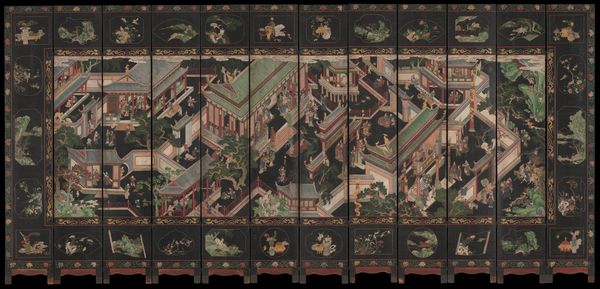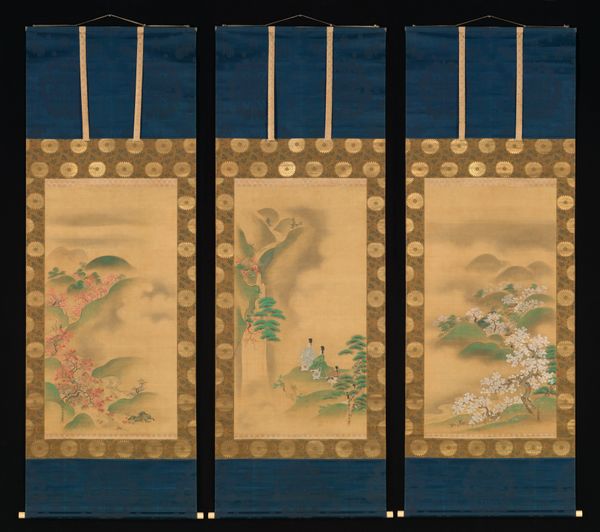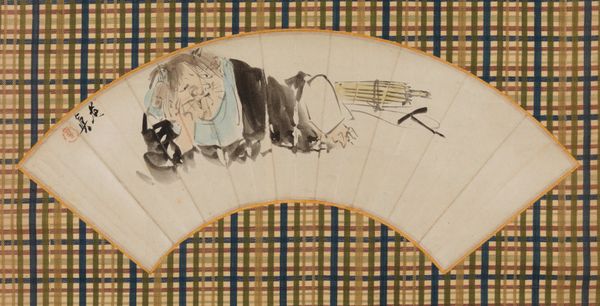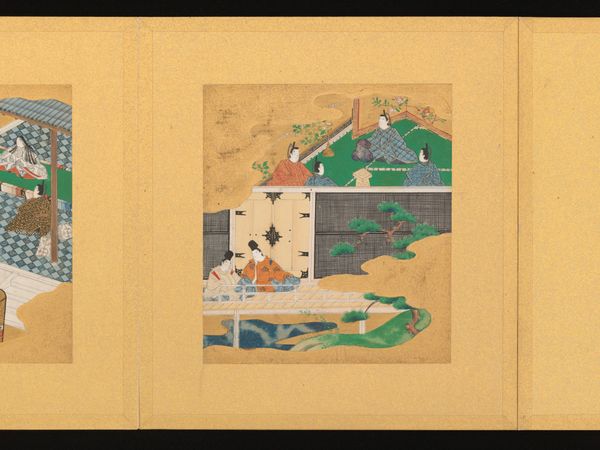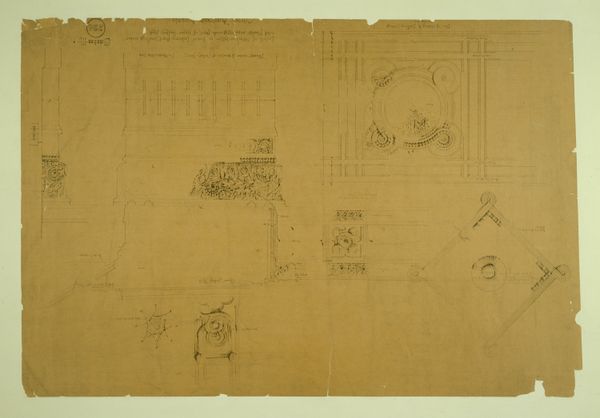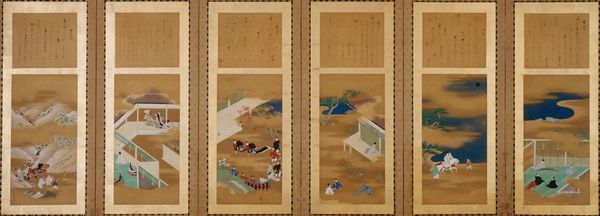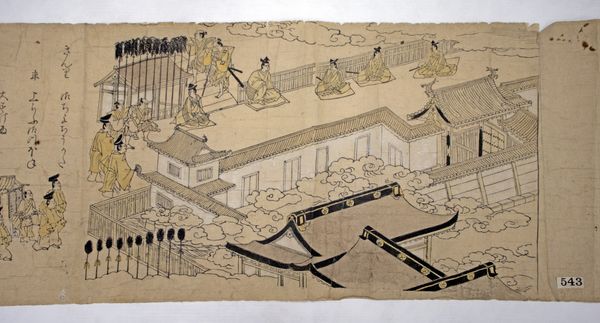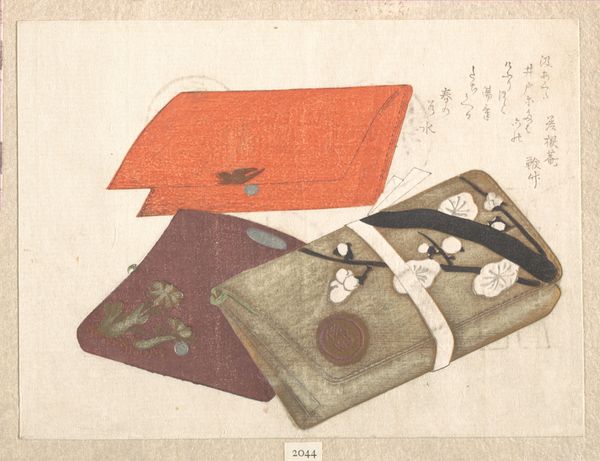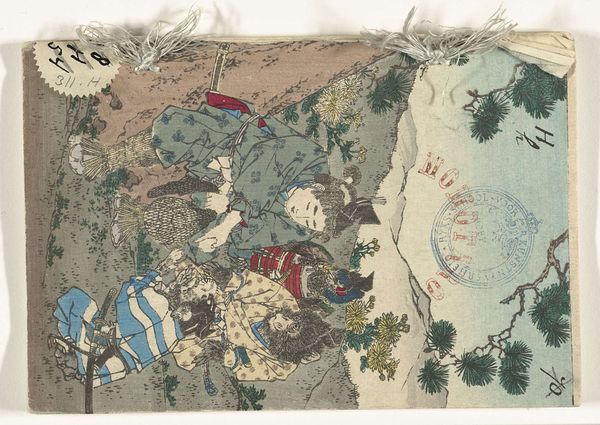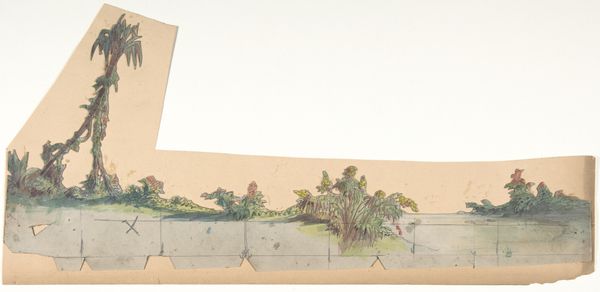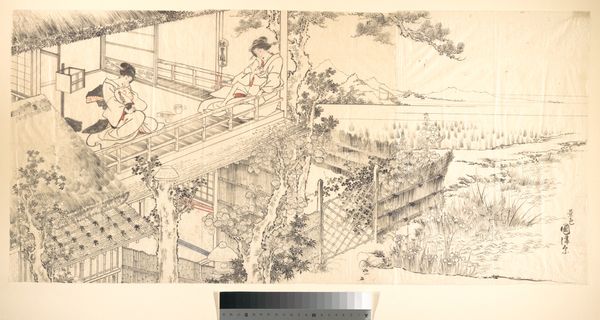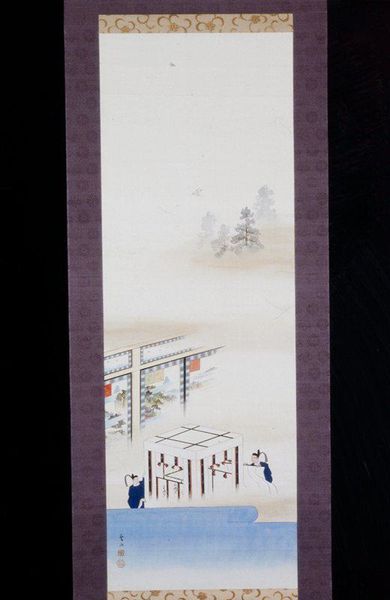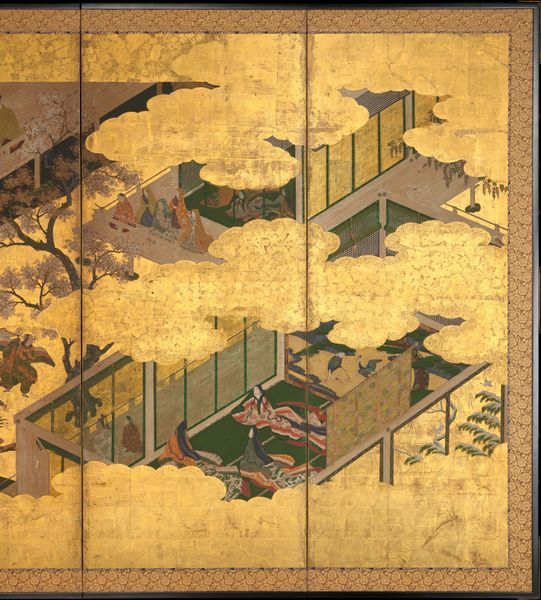
mixed-media, ink, pencil
#
mixed-media
#
water colours
#
asian-art
#
japan
#
ink
#
pencil
#
genre-painting
#
mixed media
#
watercolor
#
yamato-e
Dimensions: 12 1/4 x 169 in. (31.12 x 429.26 cm)
Copyright: Public Domain
Curator: Before us is *A Story of Crickets*, attributed to Sumiyoshi Jokei and dating from the 17th century. It's rendered in mixed media—ink, colors, and possibly pencil—on paper. What strikes you first about it? Editor: The composition is just so airy and intimate. It gives me the feeling of peering into separate lives. Curator: Yes, the composition divides the interior space almost architecturally. Note the sharp diagonals creating geometric spaces. The *yamato-e* tradition heavily influences this work—a Japanese painting style characterized by its narrative scenes and attention to detail. Editor: Absolutely. The details, however, read as indicators of a leisured elite—specifically, women occupying separate quarters engaging in art and music, or conversation, while seemingly disconnected, they’re under the same structure, maybe literally—ruled by its rigid frame, but maybe metaphorically, a patriarchal home. Curator: The perspective here is also interesting. It isn't quite a Western vanishing point; the architecture and figures flatten, emphasizing surface and pattern, more a visual arrangement than an illusion of depth. I observe an engagement with color theory, the soft blues play nicely against the warmth of the figures. Editor: It reminds us how gender shaped experience then, where movement for women was often within defined space. It presents a tableau of confined elegance. I see hints of that, in each segmented space. The poem inscriptions along the right and left margins enhance that sensation. I wonder what we're supposed to extract from it. What story do these crickets signify to you? Curator: For me, the artist's use of space draws us to ponder those very spatial relationships, not so much the explicit story itself but more the intrinsic formalism. These compositional devices enhance the elegance. It reminds me of looking at a minimalist landscape where space becomes a core subject. Editor: Ultimately, it compels us to question who has the privilege to occupy space, literally, artistically, and historically. It's a potent testament to cultural forces as social architects, isn't it? Curator: Quite insightful, I find my eyes going back to the formal arrangement of these geometric structures. It does hold this subtle aesthetic power to contemplate it in an inward form.
Comments
minneapolisinstituteofart almost 2 years ago
⋮
One of the great Japanese contributions to pictorial art is the emaki, or picture scroll. Although the format first developed in China, the Japanese combined their own narrative subject matter with their unique decorative painting style (yamato-e), to create a new, distinctly Japanese art form. Buddhist legends, literary and historical works, biographies and fables were all illustrated in lively compositions accompanied by elegant text. This story concerns the birth of a son in an aristocratic family. The characters wear lavish costumes popular during Japan's Heian period (794-1185). The artist also makes use of a stylistic device developed at that time know as fukinuki-yatai, or "torn away roof," to better show the action within architecture. The story also typifies the wit and humor often encountered in Japanese painting, for the characters are depicted not as Heian aristocrats, but as grasshoppers and other animals.
Join the conversation
Join millions of artists and users on Artera today and experience the ultimate creative platform.
